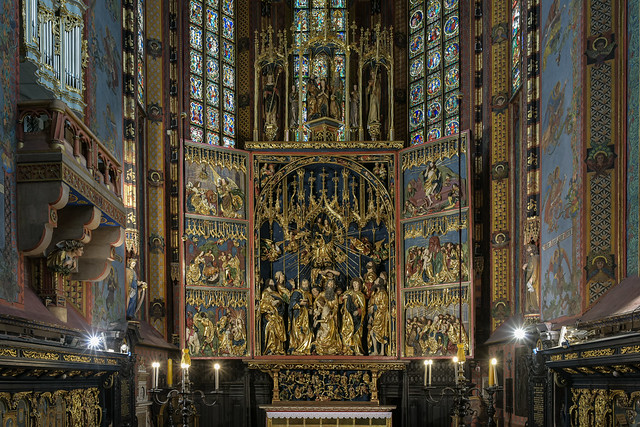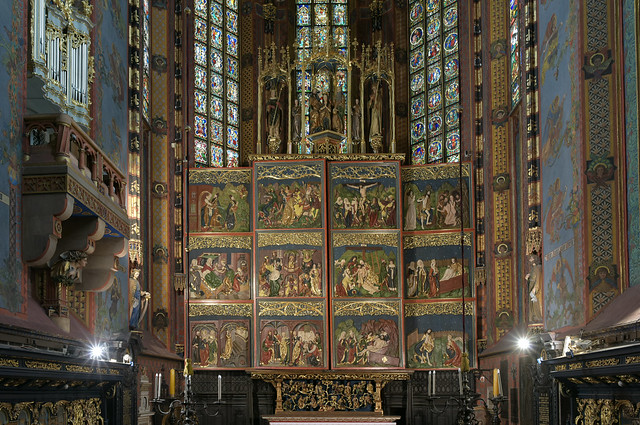Wit Stwosz Altarpiece in St. Mary’s Basilica
The Historic Centre of Kraków with St. Mary’s Basilica was recognised as one of the first UNESCO World Heritage sites in 1978 for its outstanding heritage value. St. Mary’s Basilica is particularly famous for its Gothic altar of the Dormition of the Blessed Virgin Mary, carved by Wit Stwosz (Veit Stoss) between 1477 and 1489. A remarkable project to restore the altarpiece, undertaken in situ, has returned it to its former beauty.
The project was co-financed by the Civic Committee for the Restoration of Kraków Heritage (SKOZK), the Polish Ministry of Culture and Cultural Heritage in Poland, the Municipality of Kraków and St Mary’s Parish.
The altarpiece originally stood at 18m high and 11m wide and its figures are based on residents of medieval Kraków, who sat as models for the artist. It is therefore an interesting source of knowledge on the culture, customs, and history of the city at the time.
In 2012, concerns were raised about the condition of the altarpiece and a commission was established to assess its stability. It concluded that the altarpiece was “stable, yet threatened”. To preserve this priceless piece of heritage, a programme of research, conservation and preventive measures was required.
In 2015, in order to keep the altarpiece in place in the Basilica, a workshop was established behind the altar where conservators would continue their work for over 1000 days. Special scaffolding was built in front of the altar, allowing visitors to watch the conservators at work. The team worked on over 200 figures, with the largest weighing in at 250kg and exceeding 3m in height, as well as thousands of individual sculpted elements.
The conservation performed by the experts from the Academy of Fine Arts in Kraków involved a full spectrum of scientific possibilities. The structural wood was consolidated, cracks were filled and the original fillers were respected. Remnants of repainting from a later period were removed, and the arrangements of figures and microarchitecture on the corpus and predella were amended. These works uncovered the original Gothic complexion of the figures and the framing, revealing the original intentions of the Nuremberg master. Research and analysis also served in developing guidelines for fire prevention and emergency evacuation.
Extensive international consultations were an essential part of the project, involving experts in Gothic sculpture conservation from Poland and Europe, who exchanged knowledge and ideas, in turn yielding many new discoveries.
“The restoration of this magnificent altarpiece is a unique and exceptional achievement. The meticulous conservation of the Wit Stwosz Altarpiece in St. Mary’s Basilica, based on thorough research, was carried out by professionals who demonstrated great respect and sensitivity towards the original work. The project brought together people from different countries, reflecting the international importance of the site and the need for cooperation in preserving European heritage”, the Awards’ Jury commended.
“At the same time, it is an achievement on an impressive scale, being one of the largest Gothic altars in the world”, the Jury added.
More information
Contact: Msgr. Dariusz Raś, PhD | archiwum@mariacki.com | www.mariacki.com/en



